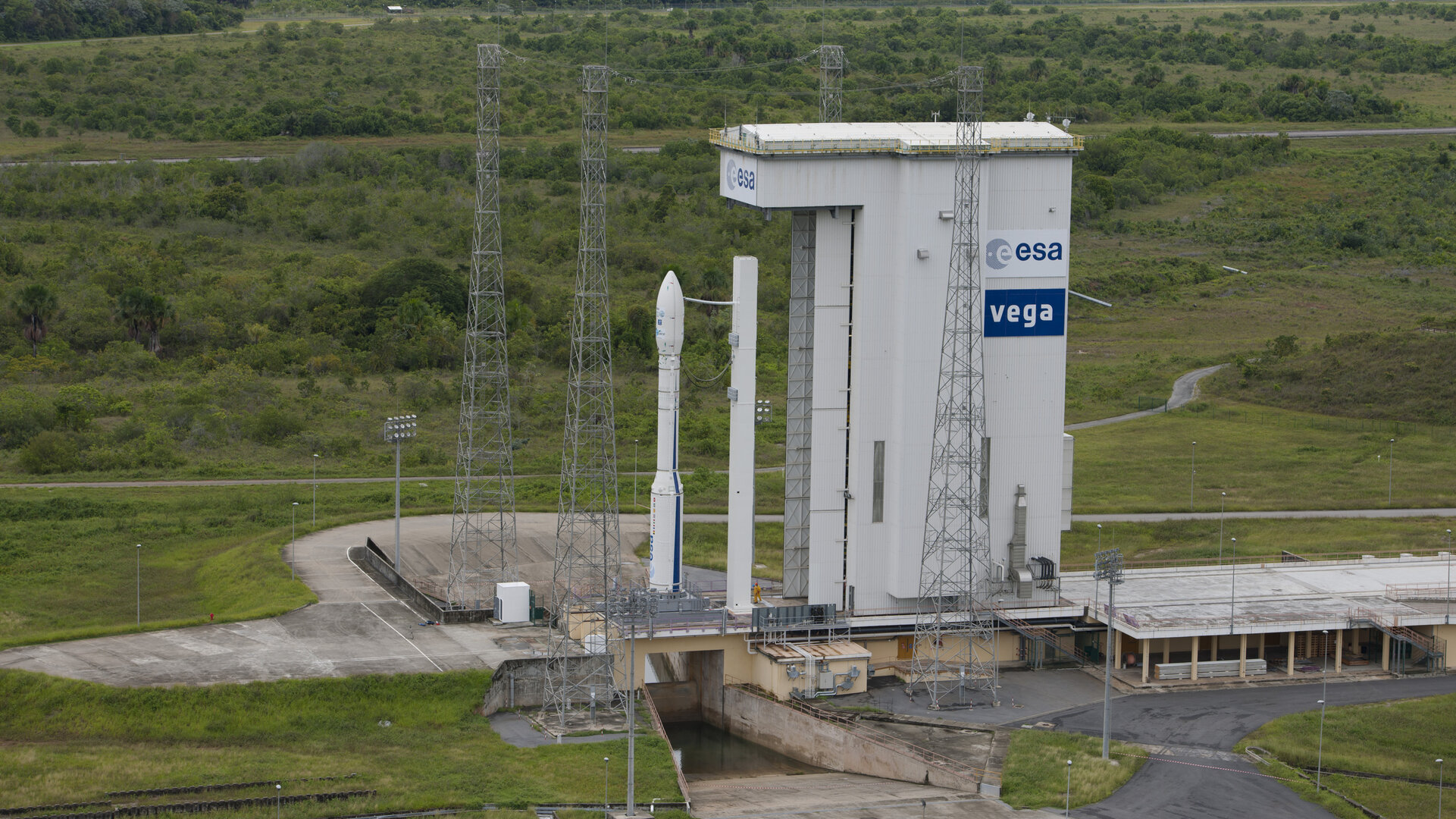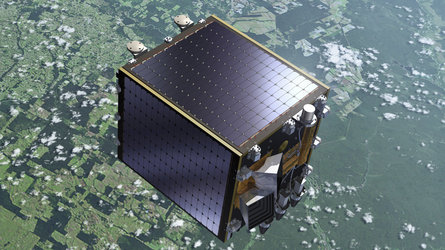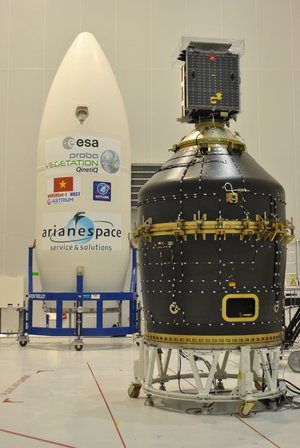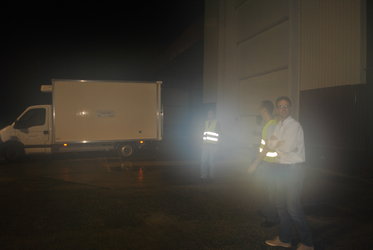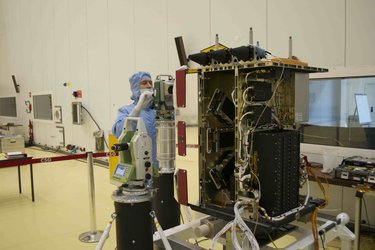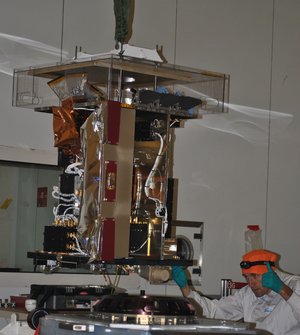Proba-V ready atop Vega launcher on pad
ESA’s Proba-V and its two companion satellites are sitting on top of their Vega rocket on the launch pad, ready for a flight rescheduled to the night of 3/4 May.
To carry out additional checks on the mobile gantry used at the Vega complex at Europe’s Spaceport in Kourou, French Guiana, ESA and Arianespace have decided to postpone flight VV02 for 24 hours.
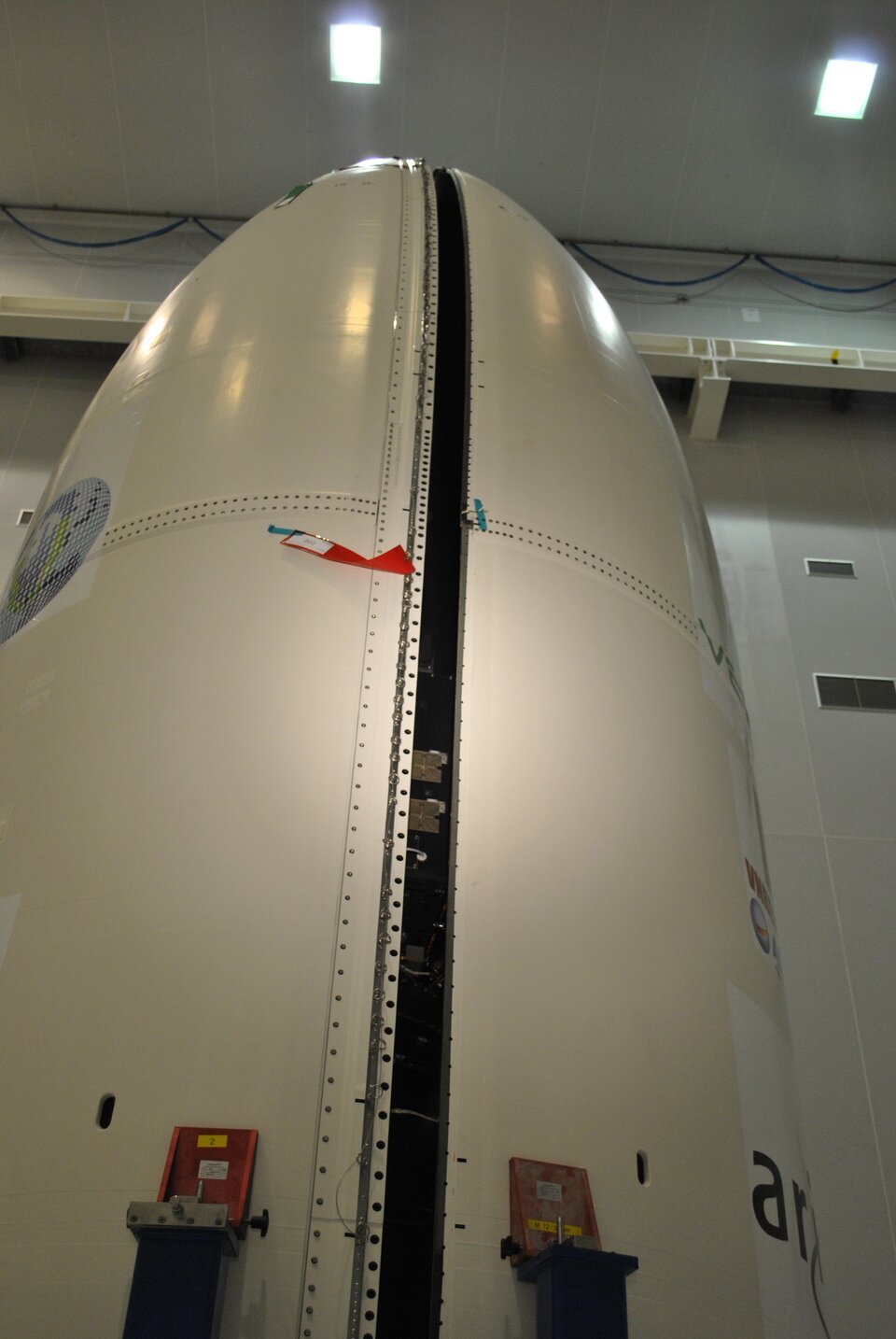
Liftoff is now scheduled for the night of 3/4 May at 02:06:31 GMT on 4 May (04:06:31 CEST 4 May; 23:06:31 local time 3 May).
On 15 April Proba-V was fixed to the Vespa secondary payload adapter, above Vietnam’s VNREDSat-1 Earth observation satellite and the ESTCube-1 Estonian student nanosatellite.
Two days later this entire stack was enclosed within Vega’s protective fairing. On 19 April the ‘upper composite’ was transported to the mobile launch tower, where it was hoisted up to the top platform.
The assembly was attached to Vega the following day, sitting above the reignitable upper stage that will steer the trio of satellites to their various orbits.
The mobile launch tower was retracted on Tuesday, leaving the completed rocket in place on the pad ready for a full checkout.
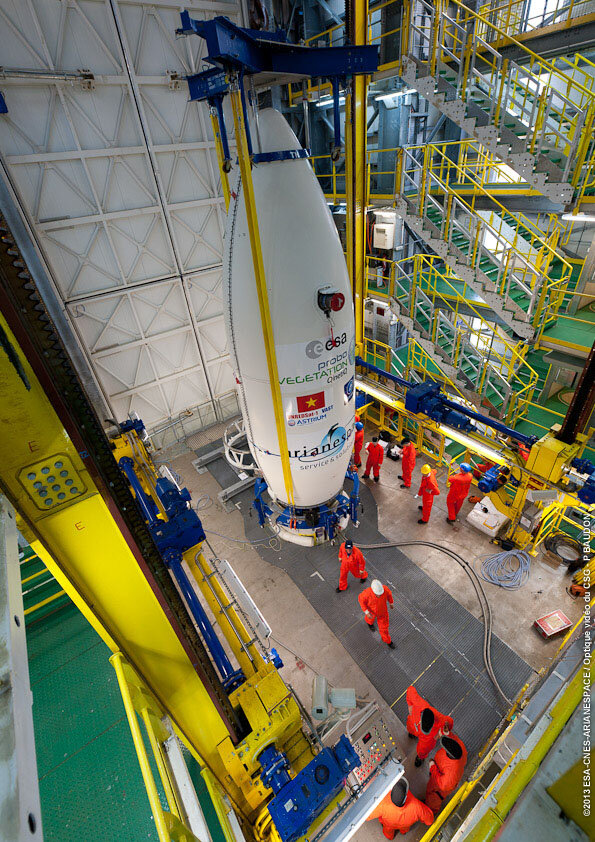
Proba-V will be the first of the three satellites deployed from the upper stage. Occupying less than a cubic metre, it is a miniaturised ESA satellite tasked with a full-scale mission: to map land cover and vegetation across the entire planet every two days.
This new, advanced version of the Vegetation camera is the latest in a series already in service on France’s full-sized Spot-4 and Spot-5 satellites, which have been observing Earth since 1998.
The minisatellite will provide data to the camera’s worldwide user community of scientists and service providers as soon as it is commissioned in orbit.
This second flight marks the start of the Vega Research and Technology Accompaniment programme, or VERTA, to demonstrate the flexibility and versatility of the vehicle. At a planned minimum of two launches per year, the programme will allow the smooth transition of Vega into commercial exploitation.















 Germany
Germany
 Austria
Austria
 Belgium
Belgium
 Denmark
Denmark
 Spain
Spain
 Estonia
Estonia
 Finland
Finland
 France
France
 Greece
Greece
 Hungary
Hungary
 Ireland
Ireland
 Italy
Italy
 Luxembourg
Luxembourg
 Norway
Norway
 The Netherlands
The Netherlands
 Poland
Poland
 Portugal
Portugal
 Czechia
Czechia
 Romania
Romania
 United Kingdom
United Kingdom
 Slovenia
Slovenia
 Sweden
Sweden
 Switzerland
Switzerland


























